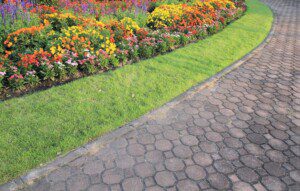The 6 basic elements of landscaping
The 6 basic elements of landscaping
According to professional landscapers, Sunscape Landscaping, landscaping is both an art and a science. It involves designing outdoor spaces that are both visually appealing and functional. Whether you’re creating a garden, outdoor living area, or a commercial landscape, there are six basic elements that are essential to the success of any landscaping project. Here they are:
- Line
Lines are the foundation of any landscaping project. They are the pathways that guide the viewer’s eye through the space. Horizontal lines can create a sense of calm and stability, while vertical lines can add height and drama. Curved lines can bring a sense of movement and flow, while diagonal lines can add a sense of energy. Strong lines can help define the boundaries of a space and create a sense of order.
- Form
Form is the shape and structure of any element in a landscape design. It includes the shape of plants, trees, and other natural features, as well as human-made elements like fences, walls, and sculptures. Form can create a sense of balance, identity, and consistency.
- Texture
Texture is the surface quality of any landscape element. It includes the roughness or smoothness of surfaces, as well as the size and shape of individual components. Texture can add depth and interest to a space, as well as help highlight specific plants or other elements.
- Color
Color is one of the most important elements in landscape design. It creates mood, highlights focal points, and reinforces the overall design. Warm colors like red, orange and yellow create a sense of excitement and energy, while cool colors like blue, green and purple create a calm and peaceful atmosphere.
- Space
The space or area in which landscaping occurs is an element of landscaping itself. The way that space is used can be just as important as the plants and hardscaping placed within it. In other words, space should be well-proportioned and used to create a sense of movement and connection throughout the design.
- Light
Light can play a vital role in landscaping design, both as a practical and aesthetic element. It can be used to create ambiance, focal points, and shadows, while at the same time providing the necessary light for plants to grow and thrive. Whether it’s natural or artificial, lighting provides the final touches to a well-designed landscape.
In conclusion, the six basic elements of landscaping – line, form, texture, color, space, and light – provide fundamental principles that designers use to create visually appealing and functional outdoor spaces. By focusing on these elements, homeowners and commercial property owners alike can

 According to professional landscapers, Sunscape Landscaping, landscaping is both an art and a science. It involves designing outdoor spaces that are both visually appealing and functional. Whether you’re creating a garden, outdoor living area, or a commercial landscape, there are six basic elements that are essential to the success of any landscaping project. Here they are:
According to professional landscapers, Sunscape Landscaping, landscaping is both an art and a science. It involves designing outdoor spaces that are both visually appealing and functional. Whether you’re creating a garden, outdoor living area, or a commercial landscape, there are six basic elements that are essential to the success of any landscaping project. Here they are: